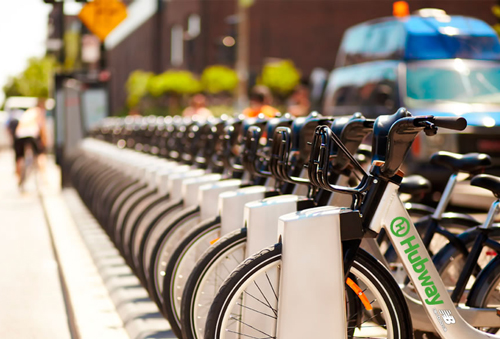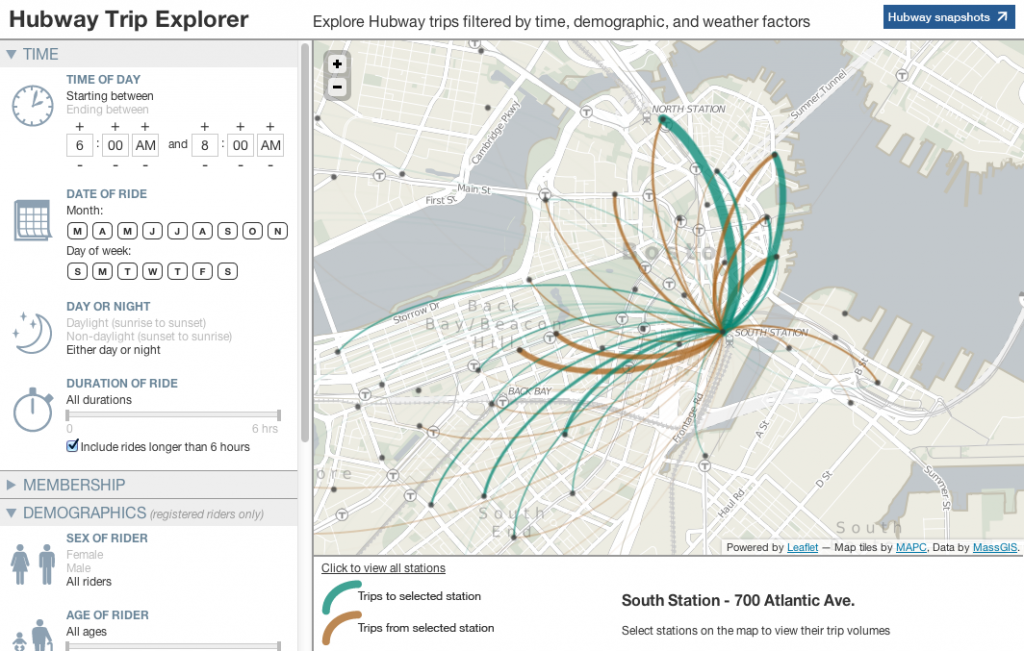 The increasing popularity of Bike Share programs in cities across the world is making transportation cycling a reality for many. Not only does it provide conveniently located bikes for newcomers or casual riders, it’s also developing a culture of cycling. I hate to say it, but it’s no doubt that here in the US, we’re a bit behind our European counterparts when it comes to cycling for transportation. With cities like Copenhagen approaching 40% of it’s citizens commuting by bike, we have some catching up to do. Part of this disparity is due to the size of the US, the spread out neighborhoods, the longer commutes, but there is also a different perception of cycling. Many Americans view bicycles as something used only for fitness, recreation, or racing. WELL, it’s also a great way to get yourself from point A to point B. In fact, one of the most efficient ways to get from A to B!
The increasing popularity of Bike Share programs in cities across the world is making transportation cycling a reality for many. Not only does it provide conveniently located bikes for newcomers or casual riders, it’s also developing a culture of cycling. I hate to say it, but it’s no doubt that here in the US, we’re a bit behind our European counterparts when it comes to cycling for transportation. With cities like Copenhagen approaching 40% of it’s citizens commuting by bike, we have some catching up to do. Part of this disparity is due to the size of the US, the spread out neighborhoods, the longer commutes, but there is also a different perception of cycling. Many Americans view bicycles as something used only for fitness, recreation, or racing. WELL, it’s also a great way to get yourself from point A to point B. In fact, one of the most efficient ways to get from A to B!
As bike share programs start to pop up in new cities, American perceptions are starting to change. Bikes are now readily available to many who might not have considered it a viable option before. Even other road users, those who would be hard pressed to get out of their SUV or luxury car for the freedom of two wheels, can’t help but see that change is happening around them. When your city is investing in bike share programs and building bike lanes, it becomes obvious that riding our streets is not just for the rogue cyclist or daring messenger, it’s for the professional on their way to work, the student on their way to class, the shopper on their way to the grocery store. It is for everyone. Cycle commuting is moving in a direction that would benefit us all: to the mainstream.
It may be a slow process, but the progress we’ve seen in recent years, and the popularity of bike share programs thus far is encouraging. In Montague’s home city of Boston, the Hubway bike share program was introduced last summer to overwhelmingly positive response. This year saw expansion of the program with more stations and more users. To make these programs as effective and useful as possible, we need to look at who is using them, where they’re utilized most, and when they are most popular. In doing so, we can undoubtedly find information that will help us improve our cycling infrastructure. BUT, we also get to look at some really neat data visualizations that are just plain fascinating. Check out the Hubway Trip Explorer below. Created by the brilliant minds at Bostonogrophy, the interactive map allows you to view trips in and out of any Hubway station, and filter it by date, time, demographics, ride duration, and even weather.
Want to see time lapse? Here is a video depicting 10,467 Hubway trips during a Wednesday to Sunday time period. Sped up to allow you to see all ten thousands trips in just four minutes, you can get a sense of the trends. Morning commuters, the flow of bikes in the AM vs PM, weekdays vs weekends. A truly fascinating visual!
If you think data is beautiful like i do, you might be interested in the other winners from the Hubway Data Visualization Challenge. You can these stunning representations of half a million Hubway rides at http://hubwaydatachallenge.org/.


